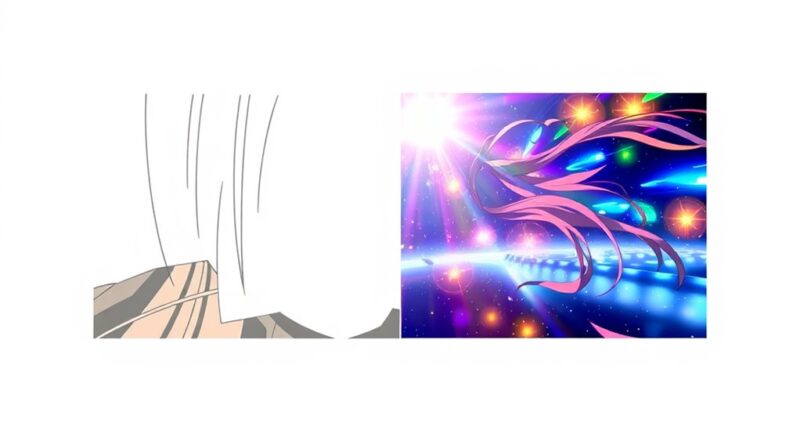The evolution of CGI in anime has gone from early experiments that looked stiff and jarring, to seamless blends that create jaw-dropping visuals. Pioneering works like *Ghost in the Shell* pushed boundaries, and technological advances such as powerful GPUs and real-time rendering made scenes more realistic. By combining 2D and 3D techniques, creators craft smoother, richer worlds. To see how these innovations continue shaping anime today, keep exploring this fascinating transformation.
Key Takeaways
- Early CGI in anime faced challenges like stiff movements and inconsistent visuals, leading to jarring effects.
- Pioneering works like *Ghost in the Shell* and *Blood: The Last Vampire* pushed CGI boundaries for realism.
- Technological advances such as high-performance GPUs and motion capture improved animation quality.
- Seamless blending of 2D and 3D techniques created more natural and immersive visuals.
- Emerging trends like real-time rendering and virtual sets are transforming anime’s visual storytelling.
Early Experiments and Challenges With CGI in Anime
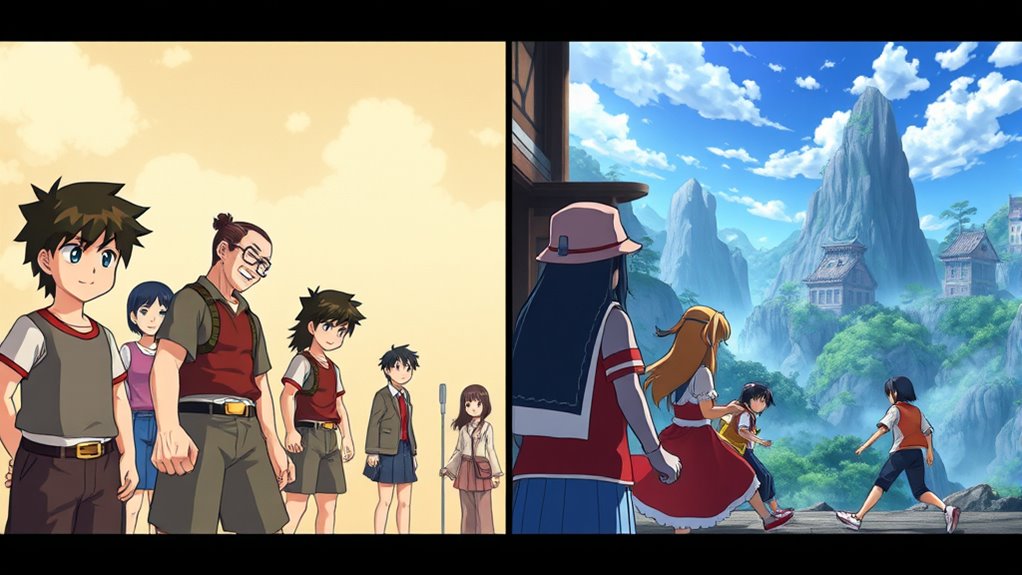
When CGI first made its way into anime, creators faced significant hurdles. One major challenge was integrating CGI seamlessly with traditional animation, often resulting in jarring visuals. Early experiments focused on improving color grading to match the vibrant, stylized look of anime, but inconsistencies still stood out. Motion capture technology was introduced to create more realistic movements, yet it wasn’t always effective; the data sometimes felt stiff or unnatural. These problems stemmed from limited tools and understanding of CGI’s potential in anime storytelling. As a result, many early attempts looked clunky and disconnected, making audiences wary of CGI’s role. Despite these setbacks, these initial efforts laid the groundwork for future innovations that would push the boundaries of anime visuals.
Pioneering Works That Pushed the Boundaries
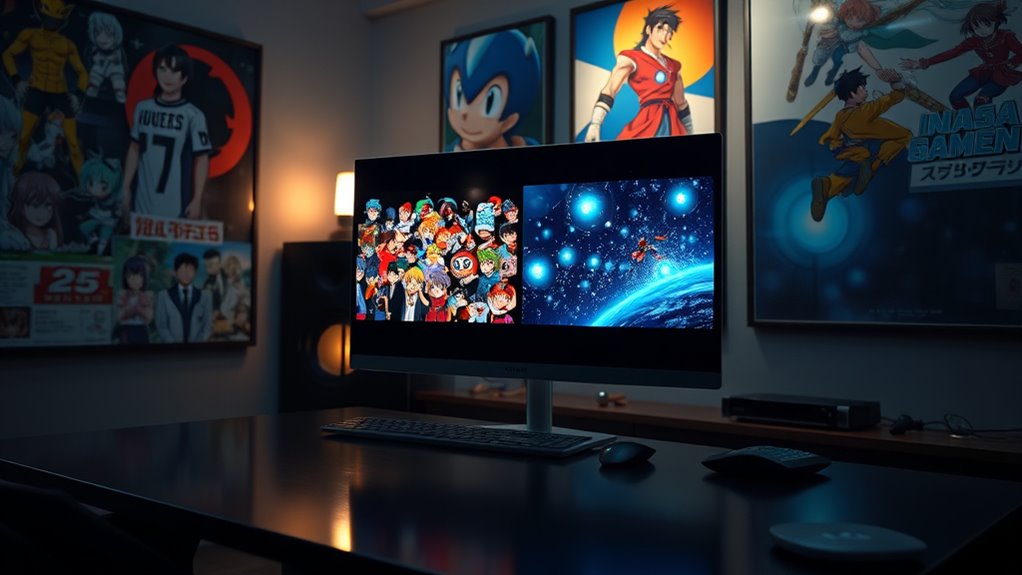
Despite early setbacks, some creators began experimenting boldly with CGI, pushing the boundaries of what anime could achieve. They introduced groundbreaking works that featured virtual characters seamlessly integrated into scenes and dynamic backgrounds that enhanced storytelling. These pioneering projects include: 1. The use of virtual characters in *Ghost in the Shell*, blending CGI with traditional animation to create lifelike figures. 2. The incorporation of dynamic backgrounds in *Appleseed*, which added depth and realism to futuristic cityscapes. 3. The innovative visual style of *Blood: The Last Vampire*, where CGI enhanced action sequences and atmosphere. These efforts challenged conventional animation limits, inspiring future developments and setting new standards for CGI in anime. They proved that bold experimentation could lead to visually stunning, immersive experiences. Color accuracy and contrast ratio played crucial roles in the visual enhancements achieved through these pioneering works.
Key Technological Advances Driving Change
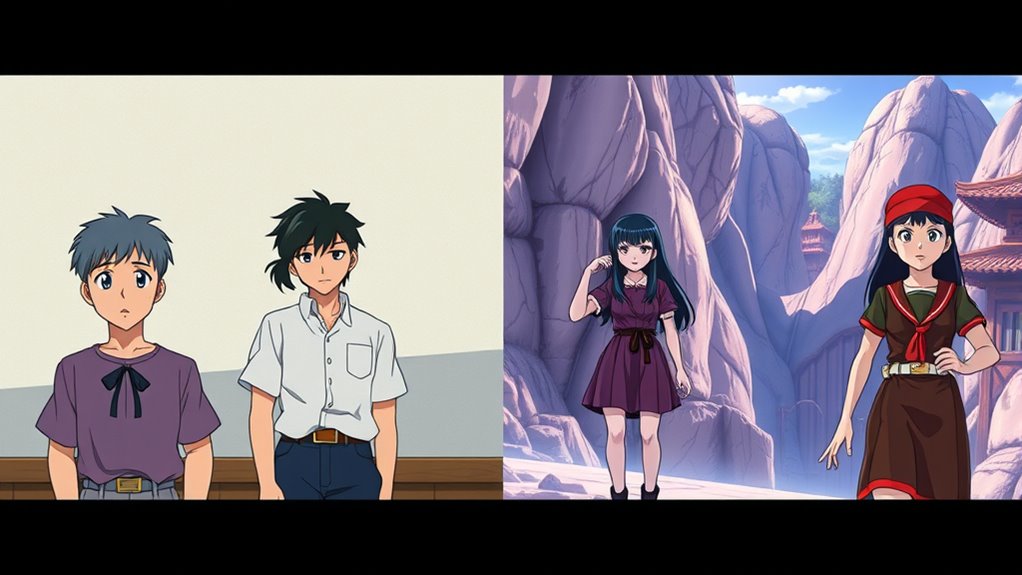
Advancements in computer hardware and software have revolutionized CGI production in anime, enabling creators to craft more complex and realistic visuals than ever before. These innovations streamline the animation workflow, reducing production time and increasing flexibility. High-performance GPUs and powerful rendering engines allow for detailed character design, giving characters more depth, nuance, and expressiveness. Software improvements, such as procedural modeling and real-time rendering, enable artists to experiment with designs easily and implement changes rapidly. Motion capture technology and sophisticated rigging tools also enhance animation quality, making movements more fluid and natural. Additionally, understanding emotional support techniques can help creators address challenges in storytelling and character development, resulting in more emotionally resonant visuals. Together, these technological advances empower creators to push artistic boundaries, leading to visually stunning anime that captivates audiences worldwide.
Seamless Integration: Blending 2D and 3D Techniques
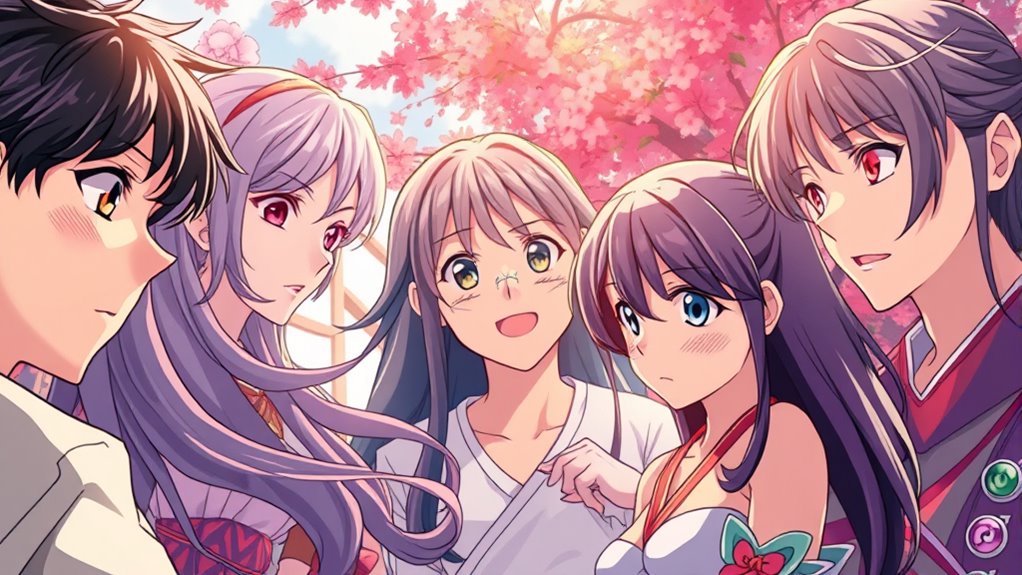
The integration of 2D and 3D techniques in anime has become essential for creating visually stunning and dynamic scenes. By blending these methods, you can achieve smoother animations, richer color blending, and more detailed character design. To effectively combine them, consider these key approaches:
Blending 2D and 3D techniques enhances anime with smoother, richer, and more detailed visuals.
- Use 3D models to build complex backgrounds or characters, then enhance them with 2D overlays for expressive details.
- Incorporate color blending techniques that unify 2D and 3D elements, ensuring seamless visual shifts.
- Focus on character design consistency, adapting 3D models to match the stylistic nuances of 2D animation.
- Pay attention to visual cohesion, ensuring that the integration feels natural and immersive for viewers.
This synergy allows for immersive worlds that feel both vibrant and cohesive, elevating the overall visual experience.
The Future of CGI in Anime and Emerging Trends
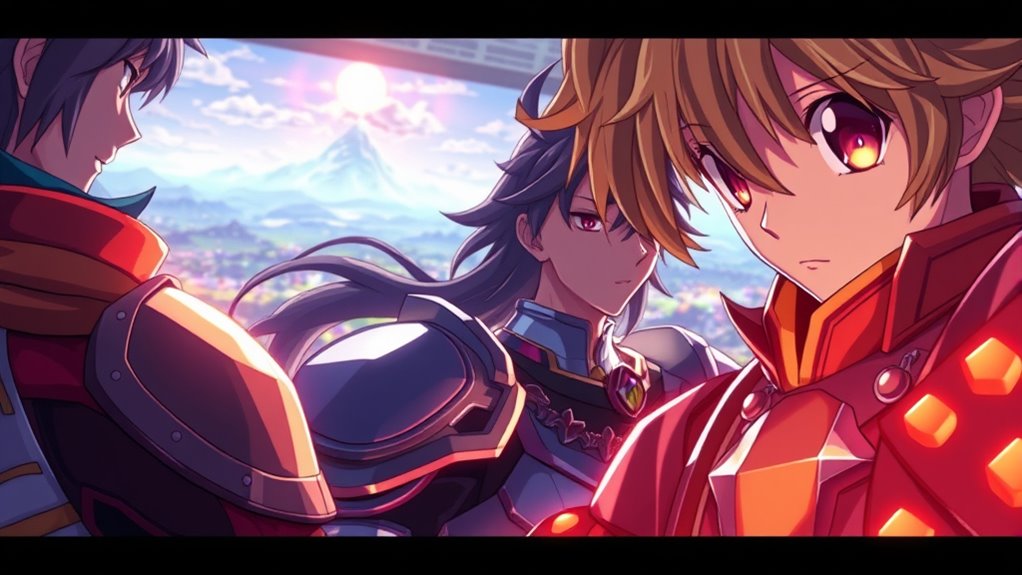
As technology continues to evolve, CGI in anime is poised to become even more immersive and versatile. Virtual sets will enable creators to craft complex worlds without physical constraints, making scenes more dynamic and visually stunning. Motion capture technology will revolutionize character animation, capturing real performances that add authenticity and nuance to animated characters. Expect more anime to experiment with real-time rendering, allowing for faster production cycles and more interactive experiences. These innovations will also facilitate seamless integration of live-action elements, blurring the lines between traditional animation and CGI. Additionally, advancements in real-time rendering will further empower creators to produce high-quality visuals with greater efficiency. As a result, you’ll see richer storytelling and more visually breathtaking anime that push the boundaries of creativity and audience engagement. The future of CGI promises an exciting era of innovation in anime.
Frequently Asked Questions
How Does CGI Impact Traditional Anime Art Styles?
You might notice that CGI impacts traditional anime art styles through hybrid animation, blending 2D and 3D elements. This integration can enhance visual depth and dynamic action but also risks clashing with the stylistic consistency of classic anime. When used thoughtfully, CGI complements traditional techniques, creating a seamless stylistic integration that enriches storytelling without overshadowing the original art. It’s about balancing innovation with respect for anime’s roots.
What Are the Cost Differences Between 2D and 3D Animation?
When comparing 2D and 3D animation, you’ll find that budget considerations and technological requirements vary considerably. 2D animation typically costs less because it involves simpler tools and shorter production times, making it more accessible. 3D animation, however, demands higher budgets due to advanced software and hardware needs, as well as longer production periods. You should weigh these factors carefully to choose the best approach for your project’s scope and resources.
How Do Audiences Typically React to CGI in Anime?
You might notice that audience acceptance of CGI in anime varies; some viewers appreciate its innovative appeal, while others find it distracting. When CGI is well-integrated, it enhances emotional engagement, making scenes more immersive and dynamic. However, poorly executed CGI can break immersion and diminish emotional connection. Overall, audiences tend to respond positively when CGI complements the story and art style, contributing to a more engaging viewing experience.
Are There Specific Genres That Benefit More From CGI?
You might think CGI only suits sci-fi or action anime, but it actually shines in genres like virtual reality and character customization, where visuals need to be dynamic and immersive. These genres benefit because CGI enhances realism and interactivity, making worlds feel more believable. With advancements, CGI now seamlessly integrates with traditional animation, engaging audiences and elevating storytelling, especially in genres that rely heavily on immersive experiences and detailed character designs.
What Are the Best Practices for Animators Working With CGI?
When working with CGI, you should focus on key practices like precise motion tracking and maintaining lighting consistency to create seamless integration. Always plan your scenes carefully, ensuring your CGI elements match the camera movement and environmental lighting. Use reference footage, double-check your renders, and collaborate closely with the team to avoid jarring visuals. These steps help produce smooth, realistic animations that enhance your overall project.
Conclusion
As you’ve seen, CGI in anime has transformed from jarring experiments to breathtaking visuals, mesmerizing audiences worldwide. Did you know that the global anime industry is projected to reach $37 billion by 2025? This growth fuels innovation, pushing creators to seamlessly blend 2D and 3D techniques. As technology advances, expect even more jaw-dropping, immersive experiences that continue to redefine what’s possible in anime’s visual storytelling.
